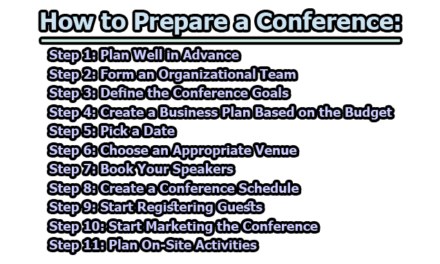10 Effective Tips to Overcome the Fear of Public Speaking:
Public speaking is a skill that holds immense value in both personal and professional realms. It can be a daunting task for many individuals, often triggering anxiety and fear. This fear of public speaking, known as glossophobia, is a common hurdle that can hinder personal and professional growth. The good news is that with the right strategies and mindset, anyone can overcome this fear and become a confident and effective speaker. In this article, we will explore 10 effective tips to overcome the fear of public speaking.
1. Understand Your Audience: Public speaking is not about showcasing your expertise or impressing the crowd with your knowledge; it’s about helping and connecting with your audience. Before crafting your speech, take time to understand the demographics, interests, and expectations of your listeners. Consider what information or insights would be most valuable to them. By tailoring your content to meet their needs, you create a more engaging and relevant presentation, making your audience feel that you are speaking directly to them.
2. Embrace Imperfection: It’s essential to recognize that striving for perfection is unrealistic and can intensify the fear of public speaking. Accept that mistakes happen to everyone, even experienced speakers. Instead of fixating on flawless delivery, focus on the authenticity of your message. Embracing imperfection allows you to connect with your audience on a human level, making you more relatable and easing the pressure you put on yourself.
3. Incorporate Humor: Humor is a powerful tool to break the ice, create a connection, and alleviate tension during public speaking. Integrate relevant anecdotes, jokes, or light-hearted observations into your speech. A well-timed and appropriate sense of humor not only captures your audience’s attention but also makes you more approachable. Laughter creates a positive atmosphere, making the entire speaking experience enjoyable for both you and your listeners.
4. Careful Drafting: While it’s tempting to write your entire speech word for word, relying on a structured outline is more effective. Craft an outline that includes key components like the introduction, main points, and conclusion. This approach provides flexibility during delivery, ensuring you cover crucial content without getting bogged down by memorization. A carefully drafted outline serves as a roadmap, allowing you to navigate your speech confidently while maintaining a conversational tone.
5. Extensive Practice: Practice is the cornerstone of overcoming the fear of public speaking. Start by rehearsing in front of trusted friends or family members who can provide constructive feedback. As you gain confidence, gradually increase the complexity of your practice sessions. Simulate real speaking scenarios, adjusting to different audience sizes and settings. The more familiar you become with your material, the more natural and composed your delivery will be when facing a live audience.
6. Gradual Exposure: Overcoming the fear of public speaking involves acclimating yourself to different speaking environments gradually. Begin with smaller, more familiar settings, such as speaking to friends or family. As you gain confidence, gradually expose yourself to larger audiences. Consider joining public speaking clubs or participating in workshops where you can practice in a supportive atmosphere. Gradual exposure allows you to build resilience and adaptability, making you more comfortable and confident as you progress to more challenging speaking engagements.
7. Engage Your Audience: Creating a connection with your audience is vital for a successful speech. Work on your body language, make eye contact, and pay attention to the reactions of your listeners. Identify individuals who are actively nodding or participating, and focus on them. Engaging with your audience not only boosts your confidence but also helps maintain their interest and attention. A connected audience is more likely to respond positively to your message.
8. Visualization Techniques: Visualization is a powerful tool to manage anxiety and boost confidence. Close your eyes and imagine yourself delivering your speech with confidence and poise. Visualize positive reactions from the audience, such as nodding heads and smiles. By mentally rehearsing successful outcomes, you can reprogram your mind to associate public speaking with positive experiences. Visualization helps create a mental framework for success, contributing to a more relaxed and confident presentation.
9. Memorize Key Points: While it’s crucial to avoid memorizing your entire speech word for word, memorizing key points and the sequence of information is essential. This prevents you from getting lost or confused during your presentation. Focus on the main ideas and key transitions in your speech, ensuring a coherent and organized delivery. Confidence comes from knowing your material well, and memorizing key points helps you maintain control over the structure and flow of your presentation.
10. Seek Constructive Feedback: Feedback is a valuable tool for improvement. After practicing your speech, seek feedback from trusted friends, family members, or mentors. Constructive feedback provides insights into your strengths and areas for improvement. Use this feedback to refine your content, delivery, and overall presentation skills. Embracing constructive criticism as a tool for growth will contribute to your continuous improvement as a public speaker. Remember, each piece of feedback is an opportunity to enhance your skills and build confidence over time.
Remember, overcoming the fear of public speaking is a gradual process, and each step you take contributes to your growth and confidence. Embrace the journey, focus on connecting with your audience, and celebrate your progress along the way.

Library Lecturer at Nurul Amin Degree College










